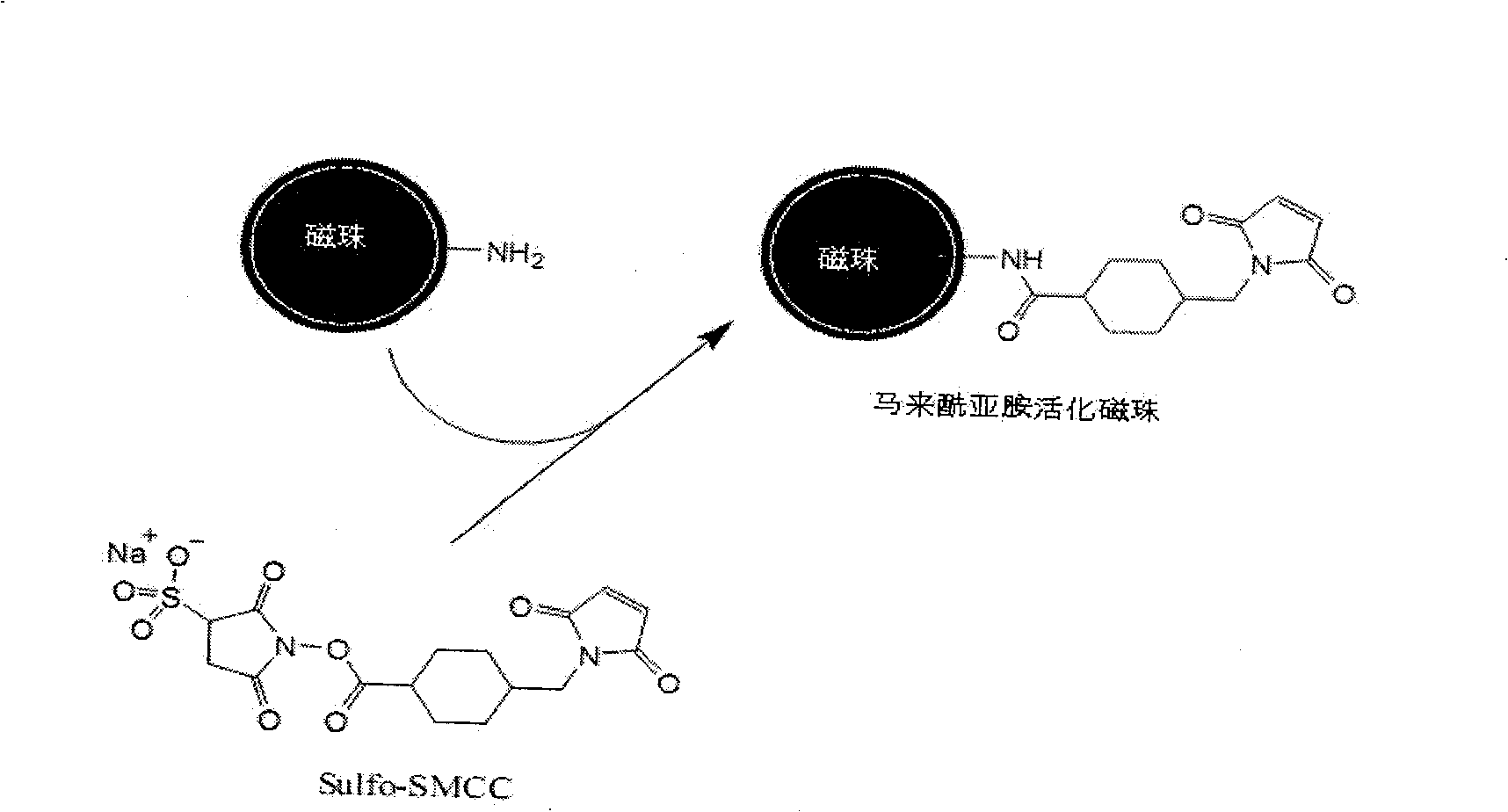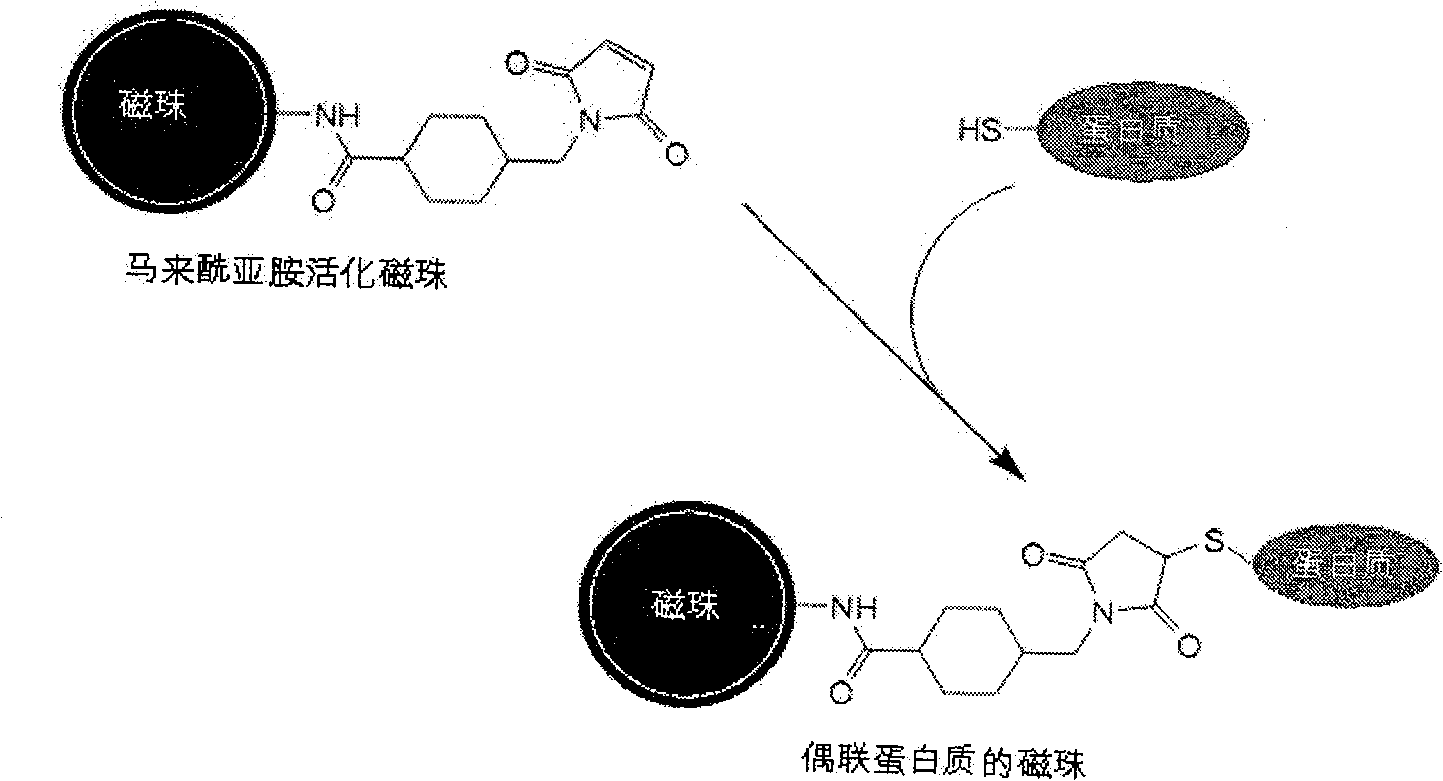Method for covalent coupling protein on amino magnetic bead surface
An amino magnetic bead and surface covalent technology, applied in peptide preparation methods, chemical instruments and methods, organic chemistry, etc., can solve the problems of magnetic bead aggregation and low coupling efficiency, and achieve good repeatability and repeatability , Improve the effect of protein coupling efficiency
- Summary
- Abstract
- Description
- Claims
- Application Information
AI Technical Summary
Problems solved by technology
Method used
Image
Examples
Embodiment
[0025] Example: Amino Magnetic Beads Coupling Sheep Anti-Mouse Polyclonal Antibody
[0026] (1) Activation of magnetic beads: Maleimide-containing chemical groups are generated on the surface of magnetic beads. Activation methods include:
[0027] (1.1) Magnetic bead pretreatment: Take 100 mg of amino magnetic bead colloidal solution and settle (magnetic separation) under the action of a magnetic field for 10 minutes, remove the supernatant, and wash the settled magnetic beads twice with magnetic bead activation buffer, 5 ml each time.
[0028] (1.2) Suspend the washed magnetic beads with 1 ml of activation buffer, add the activator Sulfo-SMCC, and suspend at room temperature for 15 minutes. The reaction concentration of Sulfo-SMCC is 1 mM.
[0029] (1.3) Add 10 microliters of 1M glycine buffer solution with pH 7.3, suspend and react at room temperature for 10 minutes, and terminate the activation reaction.
[0030] (1.4) Magnetically separate for 10 minutes, remove the supe...
PUM
 Login to View More
Login to View More Abstract
Description
Claims
Application Information
 Login to View More
Login to View More - R&D
- Intellectual Property
- Life Sciences
- Materials
- Tech Scout
- Unparalleled Data Quality
- Higher Quality Content
- 60% Fewer Hallucinations
Browse by: Latest US Patents, China's latest patents, Technical Efficacy Thesaurus, Application Domain, Technology Topic, Popular Technical Reports.
© 2025 PatSnap. All rights reserved.Legal|Privacy policy|Modern Slavery Act Transparency Statement|Sitemap|About US| Contact US: help@patsnap.com



